A leaking pool pump can make even the most seasoned pool owner nervous. Pool pumps are expensive pieces of equipment, and it’s easy to fear the worst when yours has a leak. But finding a pump leak is not a guaranteed disaster, oftentimes there is a simple fix.
Whether your pump has a small leak, or has turned into Old Faithful, we can help you resolve the problem! This guide will teach you how to identify the three most common types of pool pump leaks, and how to fix them.
Suction Side Pool Pump Leaks
Before we explain how to find a suction side leak, there are some important technical details to know. First, the suction side of your pump basically refers to any parts or equipment before the actual pump itself. Second, the most common type of suction side leaks are air leaks. While you may experience actual leaking water in some instances, you will typically be dealing with some sort of air leak. Furthermore, you probably won’t spot a suction side leak when the pump is running. When the pump is on, the force of the water is so great that it doesn’t have time to leak out. But when the pump is turned off, the water is no longer moving, giving it the chance to leak out of any cracks.
The first thing to check for if you suspect a leak is air bubbles. While your pump is running, check the water in the pump strainer basket for any bubbles. If you notice bubbles in the water, this means you have a leak on the suction side of your pump.
Don’t feel overwhelmed at the thought of finding and fixing a suction side leak. You will need to do some detective work, but thankfully, if you work through checking the areas listed below, you’ll have the problem solved in no time.
Low Water Level
If we had to pick our preferred cause for a leaking pool pump, it would definitely be low water level! Checking your pool’s water level is the first thing to do when identifying if you have a suction side leak. An insufficient water level allows air to get into the skimmer, and then travel into the pump. Your pool’s water level should cover roughly half of the skimmer intake. If your water level is low, all you need to do is turn your backyard hose on, and toss it into your pool for a bit.
SAFETY TIP: Before inspecting the following areas for leaks, be sure to turn off the power to your pump at the breaker box!
Pump Strainer Lid
The next area to inspect is the pump strainer lid. Check the lid for any cracks or worn out sections. If the lid has a crack, it’s best to replace it. You can patch up the crack, but chances are that the patch will eventually fail and the crack will return.
In addition to looking at the strainer lid, check out the o-ring underneath. The o-ring is an important part of the lid’s function, as it is responsible for tightly sealing the lid. If the o-ring is broken or worn down, it’s best to replace it. If the o-ring is still in good shape, clean it off and apply some lubricant to it.
Cracked PVC & Valves
After checking the pump lid, take your detective skills to the PVC pipes and valves. The pipes are responsible for bringing your pool water into the pump. To determine if the leak is in the pipes or valves, simply pour a bit of water over the pipes and valves, and watch for bubbles. If you see bubbles, you will need to replace the pipes and valves, or repair the pipe/valve seal.
Strainer Basket Plug
While this is a minor part of your pump, it can still create a problem for you. The quickest way to fix a strainer basket plug concern is to replace the o-ring.
Discharge Side Pool Pump Leaks
Now that we have gone over how to inspect the suction side of your pump for leaks, let’s head over to the discharge side. The discharge side, sometimes called the pressure side, is the section of your pump where water gets pumped back out into your pool. Unlike the suction side, leaks in the discharge side are likely to be water leaks, not air leaks. Leaks on this side of your pump can be a bit easier to notice and pinpoint due to the high level of pressure involved. The pressurized water will leak out of any weakened or cracked area.
Signs of a discharge side leak include:
- Dripping or spraying water around pipe fittings
- Water puddles underneath the pump.
- In extreme cases, a decreased pool water level.
Impeller
One of the first places to look when identifying a discharge side leak is the impeller. Located on the pump’s motor shaft, the impeller is responsible for creating water pressure. The impeller can get damaged due to debris obstruction, or from age and use, resulting in a leak. Take the motor off the pump to assess the condition of your impeller, and remove any obstructions. Replace the impeller if it is broken.
Housing O-Ring or Gasket
A strong seal between the pump housing and the motor is necessary to avoid a leaking pool pump. If a leak is present in this junction, replace the housing o-ring and gasket, as well as the diffuser o-ring.
Discharge Pipe
The most common cause of a leaking discharge pipe is an ill-fitting seal or shrunken pipes. If your pump has Schedule 40 PVC pipes, it is common to see pipe shrinkage due to excessive heat. Replace the Schedule 40 pipes with Schedule 80 pipes at both the suction and discharge ends.
Pump Housing
If you have inspected and ruled out the problem areas listed above, you’re likely dealing with a crack in the pump itself. Unfortunately, housing repairs are rarely successful due to the amount of pressure inside the pump. If you have a new pump, you can replace just the housing itself. But if your pump is older, it’s a good idea to replace the entire pump.
Shaft Seal
If your suction and discharge sides are working in tip top shape, but you’re still dealing with a leaking pool pump, the final place to check is the shaft seal. This seal, which sits between the pump motor and impeller, is important because it keeps water out of the motor. If this seal fails, water can leak into the motor, causing motor failure. To verify that this area is the source of your leak, listen for unusual sounds coming from your pump. This can be a sign that the inner motor bearings are trying to work in the water.
As long as the motor doesn’t have water damage, all you need to do is replace the shaft seal. If the motor has water damage, you will need to replace both the motor and the shaft seal.
Leaking pool pumps can be a real hassle! However, all you need to do to resolve the issue is figure out what part of your pump needs to be repaired. Using this guide, systematically check your pump, resolve the issue, and get back to enjoying your beautiful pool.

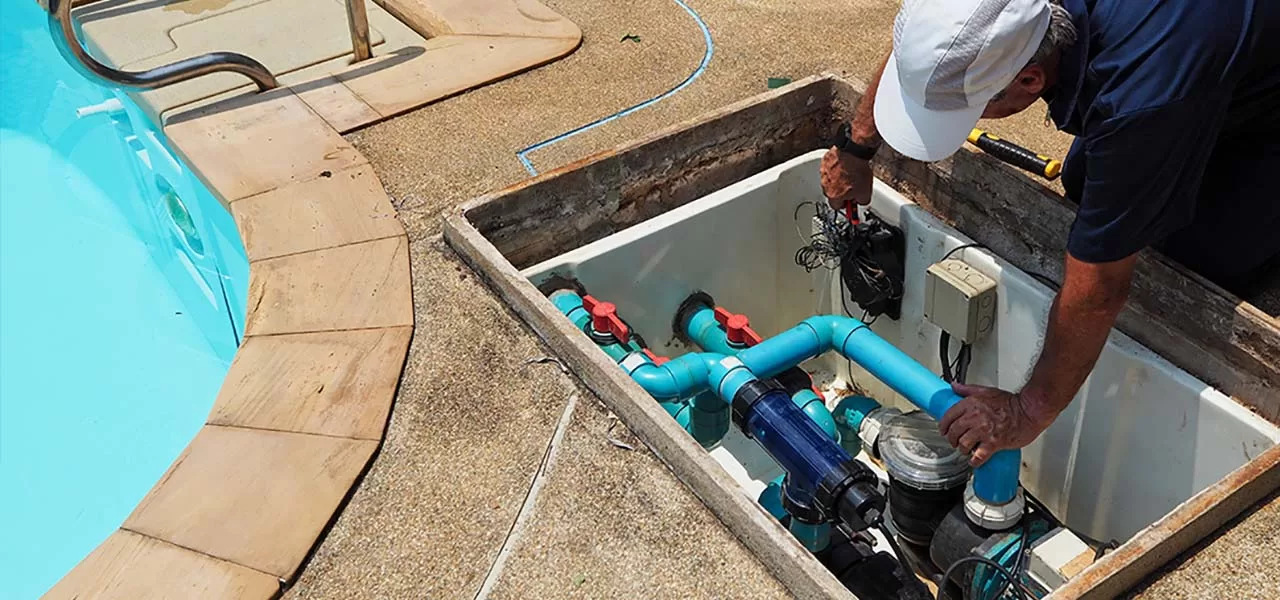

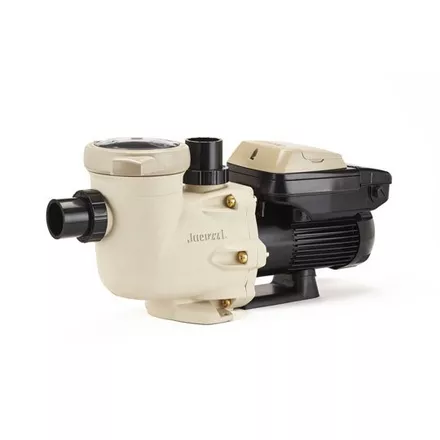

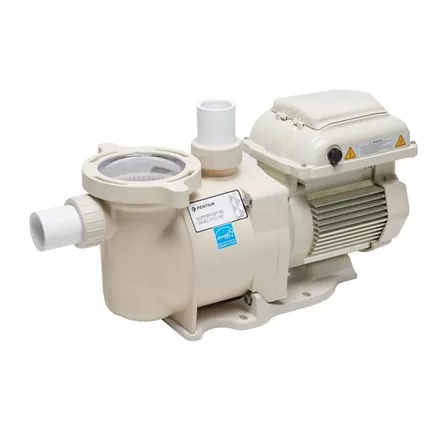
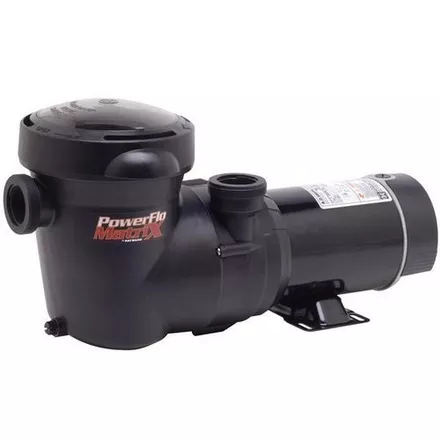
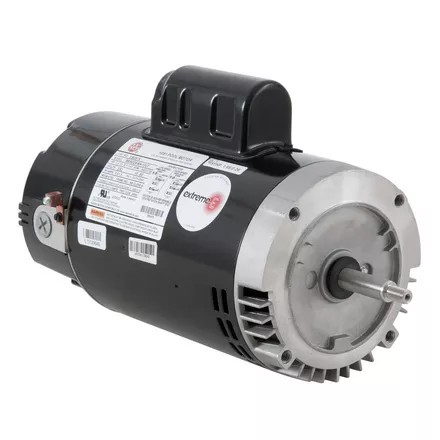
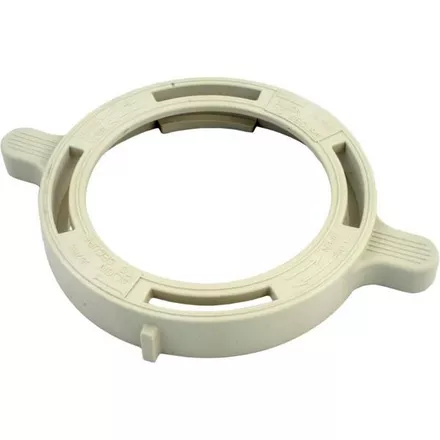

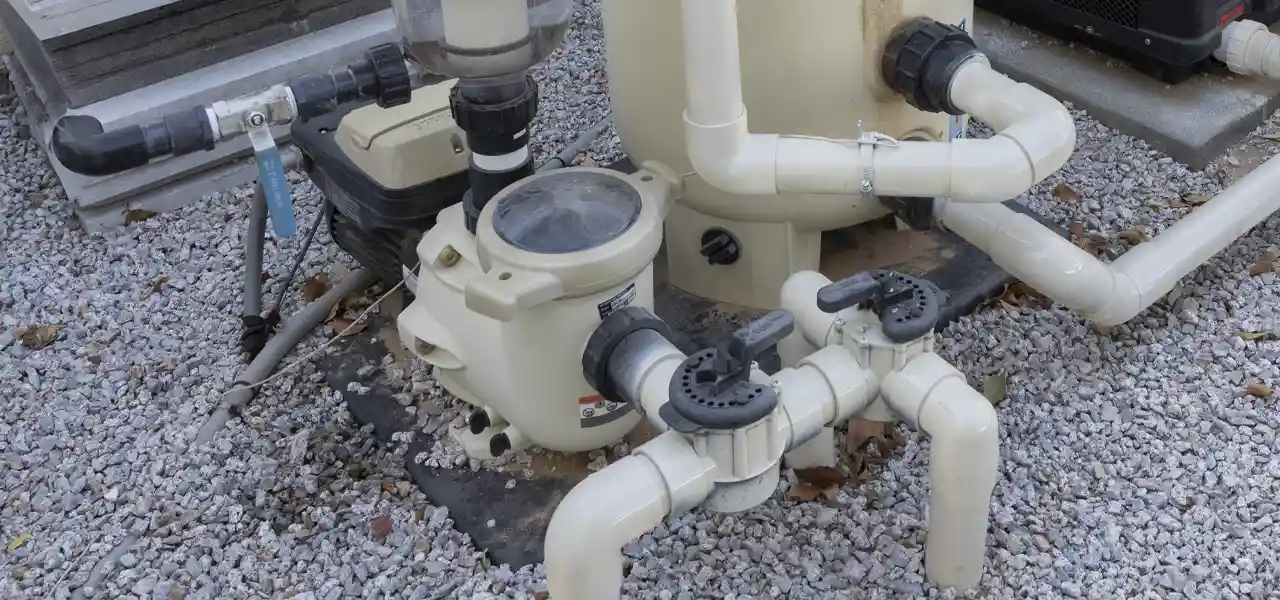
My pump has sprung a leak in the plastic itself not any rings or lids in the side of the pump not even in a seam. Can I fix it somehow just to get by the next 2 weeks till I close it??
Tammy, you can try to slow the leak with JB Weld or similar epoxy/resin putty. But it will only slow it and may fail at any moment. Patch from the inside for best results. and don’t get your hopes up, might need to close early.
My lid is leaking on my pump. I just replaced the o-ring with live and tightened the cover. It’s still leaking. Any suggestions?
Hi Moriah, When this happens, I usually flip the o-ring over, and maybe give some more lube, inspect to be sure it’s not dirty, with bits of mulch on it, lol. A new o-ring should fit very snug and tight, and not fall off. If you are certain that it is the correct o-ring, and it is lubed, and the lid is very, very tight… but it still draws air in when the pump is on, and leaks water when the pump is off, then I might next think that the lid is warped, or perhaps the strainer body, which is rare.
We have an intermittent leak that I can’t find. Very hot here and I run the pump six hours, off for three and then six more. When the pump starts in the morning there is a belch at the outlet into the pool, then no bubbles. In the afternoon there is a period with heavy bubbles, then stops. New basket o ring, heavily greased and does not leak when turned off which has been my experience in the past. Drain on pump did not leak water but was not tight. Can’t find leaks anyplace on the suction side using soapy water.
Hi Jack, so you are asking about an Air Leak, not a water leak. My favorite method to locate an air leak on the suction side is to put the suction side under pressure. Buy a 1.5″-2″ Drain King at your local hardware/home store, or buy online. Connect to garden hose and put in skimmer. Close drain and other skimmer valves. Put filter multiport on the Closed setting, or if no MPV, plug the pump inlet or volute opening. Turn on hose and where you see water leaking (under pressure) is where you will have air leaking (under suction).
Excellent tip Jack on the Drain declogger. I’ve been chasing an air leak for months. I bought the version at Lowes for $10, hooked it up, and started adjusting valves, moving pressure points around. BOOM! Water started squirting our of the Jandy Valve to the main drain, I never use that, so hadn’t got around to changing its seals. 3 O-rings and 10 Minutes later, my pump primed like it hasn’t in MONTHS. Awesome, thanks so much for the help!
Hi, we replaced a fitting on our pool yesterday. It’s a brand new pump and now a brand new fitting. We used the plumber’s tape and we tightened it down as tight as we can get it and we have water seeping out around that fitting. There’s not any air in the system so it’s not causing an issue I don’t think but we’re not sure why we have water seeping. We think we did everything the way we should have done with the Teflon tape, the new fitting, the new pump.. is there something that we did wrong? I read that it is possible to tighten them too much…??
Hi Callista, when plumbing fittings heat-up, the threads can shrink, but this is a new fitting? Did you wrap 3-5 times with teflon tape, in a clockwise direction? In some cases, when needed, you can add silicone sealant, like RTV sealant, or gasket maker silicone – spread it into the fitting threads and then wrap with Teflon for a better seal. Over tightening is probably not the issue, unless you see small cracks around the opening, if you see those, fill them with SuperGlue.
I think he did 3 layers of the teflon tape. No cracks that we can see. Will having water seep like this damage the pump or filter? At this point in the season it might be easier to fix it after shut down if there’s not gonna be any damage done.
should not be any damage from a small seeper / weeper. Many systems have little drips here and there. As long as it’s not running on to the motor, no real problem. Long term, leaks can cause an equipment pad to tilt, from water eroding the base or small hillside behind.
We replaced the gasket around the filter head and the housing. It was replaced with a hayward oem gasket. It continues to drip even after making sure everything was tight. The housing clamp was also replaced. Any idea whats going on ?
Hi Tom, sometimes it takes a few tries… be sure the o-ring/gasket is clean and lubed, and look for any indicator arrows on the tank that should line up (only on a few filters). If there is an internal steel backer ring for the o-ring to sit up against, make sure it is in place. (you did not mention the make/model filter so I’m covering many bases) Try moving the clamp to a different position if possible. Make sure clamp is as tight as possible, tapping with a hammer or heavy thing, to seat the clamp, once or twice while tightening. If your clamp has a spring and T-bolt, make sure all spring sides are touching. The clamp should squeak and creak while tightening, needs lots of torque.
I HAVE A LEAK UNDER THE MOUNTING PLATE/PUMP JOINT HOUSING/ HAYWARD SP2605X7 PUMP INTERFACE. I DID NOT INSTALL A PUMP HOUSING GASKET.
I INSTALLED A NEW 3/4 HP MOTOR, ASSEMBLED THE SHAFT SEAL PERFECTLY WITH THE RUBBER END FACING THE IMPELLER’, ASSEMBLED THE SEAL PLATE,MOTOR MOUNTING PLATE,DIFFUSER,AND TIGHTENED THE FOUR MOUNTING BOLTS AT THE PUMP HOUSING/MOUNTING PLATE.
Hi Jack, any possibility that you got the wrong seal? Superpump uses a 201 seal, or SPX1600Z2. OR possibly one of the four mounting bolts is not all the way tight, but you would normally see a gap on the outside. Sometimes the female threaded bushings in the pump housing can spin free, and prevent full tightening of the bolts.Probably don’t need a new pump housing gasket, but perhaps it is twisted and not laying flat? The new motor, possibly a bent shaft? Sometimes they get dropped and even just a 1 mm wobble would cause a leak. If none of that seems the cause, I would try a new shaft seal, as a cheap and hopeful fix.
Can I run my pump with a leaky shaft seal
Yes, you can run the pump with a leaking shaft seal. Is it possible that someone else is out there turning valves, or maybe restricting the flow of the pool returns? Maybe by leaning their back up against the return? Or if the motor shaft is bent, or rusty, that can also cause shaft seal failure.
Hello,
I have a hayward super pump 1HP, started leaking from the bottom. Not from any fittings. So I bought new seal kit from leslie’s although it was double in price than amazon, since I wanted to be sure it’s good quality. Anyways, I replaced seal and all o rings easily, there is water spraying out from bottom of pump worse than before dripping. I wonder why wouldn’t the shaft seal work. It is the right seal for 1607 pump. I put seal in correct direction without any problems.
Thank you
The only thing I can think of is that the spring portion of the seal was put in backwards, altho you say it was done correctly. The hard plastic side of the spring-half of the seal should face the motor and the soft rubber side should face the pump. And you also replaced the seal plate gasket, and it went in smoothly? You did not lube the shaft seal did you? No lube needed. The round donut part of the seal, also not backwards? White ceramic face would face the pump, black rubber cover on the motor side. Rusty motor shaft? That could leak, can be cleaned with emory cloth or sandpaper…
I have a Hayward pump and I’m always replacing the seal shaft why does that continue to happen I even bought a new pump and the same thing is happening to that pump what is causing this please help
Hi Linda, a shaft seal can fail from overheating, like running the pump without water flowing. Or, it can happen by closing a return side valve suddenly, giving the water nowhere to go, or by turning the multiport valve on the filter without shutting off the pump first. It can fail (instantly) if installed backwards.
I think I am getting my pool pump replaced. After just less then 2 months my pump started overheating
That is not mormal. It has over heated to the point where it was untouchable and melted the hose connections. It also melted the threads inside the pump. As a result, the connection was backed out due to the vibration.bit was wrapped and tight
I lost 4000 gallons of water.
Hi there, my pool pump won’t fill up to the top when I have the debris basket installed. When I take out the basket and restart the pump it fills up to the top. I’m not sure what would cause, does anybody have any ideas?
Hi Joe, that sounds odd, not sure why that would do that, but it’s not important if the basket fills up to the top or not, as long as it is pumping water full steam, and not drawing in air – air that is pushing out the wall returns.
Hi. I have an inground concrete pool. I’m losing about an inch of water a day. There are no stairs to do a bucket test. I’m losing water with system on and off. There seems to be water leaking slowly under pump. I had a leak detection company come out and they said they though the leak was around light. They put putty around light and dye test shows no leaking around light. However I’m still losing water. Could the pump leaking cause that much of a loss in 1 day? It’s not gushing water but it seeps out immediately after it’s dried. Thanks
Michele, a drip on the pump would not be noticeable in the pool level, it would have to be gushing… It could be the light or it could be the skimmer. Lay on the ground and look inside the skimmer, and look for bits of debris stuck into the area where the plastic skimmer meets the concrete pool. If found, shut off the pump and use food coloring or a test kit reagent, or our nifty dye test syringes, and dye test the skimmer. If nothing found, assume the light, and buy a Light Cord Stopper, to seal up the light cord. You just need to know if it is 3/4″ or 1″, or buy both, they are just $5 each. Insert them in the back of the light niche (remove light first), where the cord exits the niche.
Hello,
Help Have 2 leaks out of housing of motor pump could it be just a seal?
Or should repair whole housing?
Have used a spray sealant and cement sealer but still leaking
Hi Mary, if the leak is coming from directly beneath the pump center, where the motor meets the seal plate, and is not dripping down from the pipe above, then yes it would be the shaft seal. Another common leak is the pipe that comes out of the housing, going to the filter. Overheating can cause these threads to shrink, and replacement is the only fix. Seal plate o-ring could also be leaking. Housings themselves can crack also, but is rare. Usually it is the seal, the pipe or the o-ring, or a drain plug.
I have very low water flow coming out of the Jets in the pool & hot tub. There are also small bubbles coming out. I see air in the top of the pumps clear lid & I can bleed are off at any time when opening the bleeder valve on top of the filter. The filter housing is a Hayward. There is NO water leakage anywhere. ?????
Richard, it’s not uncommon to always see air in the pump basket, or to always have some air in the tank that will bleed off when you open the valve… but bubbles in the pool, and low water flow are not common. Check that the pump impeller is not clogged, esp. if the filter pressure is lower than normal. Second, check for air leaks – which always will come from before the impeller. Primarily, air leaks come from the pump lid being loose or o-ring not lubed or both, or from the threaded pipe in front of the pump not being sealed well, or shrunken from intense heat, or from leaky suction side valves (skimmer / main drain). There are some posts on our blog about locating an air leak you might want to check out.
We replaced the shaft seal on our 1 HP Hayward pump, but it’s still leaking from the bottom…even more. Do you think we got a bad shaft seal? Should we get a genuine Hayward part, what is the problem. My husband wants to buy a motor replacement, I say no! Someone is selling a use 1HP basket included for 150, I say buy that instead.
Hi, the seal may have been installed backwards, that’s easy to do, or a rough and rusty motor shaft, where it passes thru the seal… or some other installation error, but likely not a bad seal. Generic seals are fine as well. Open it back up and make sure that the spring half of the seal has the soft rubber side facing the impeller, and the hard plastic side facing the motor.
Hi I just replaced my pool pump last year and I noticed that is has been leaking from the bottom.It has been running just fine but today I went to turn it on and it will cut on and then my breaker well flip.Is this serious or could it be it has gotten to wet and needs to get out ?And maybe a deal is broken?
Tracy, when leaking from underneath, it’s almost always a shaft seal. But that should not trip the breaker, unless the shaft is no longer turning easily, and the binding-up is causing the breaker to trip. A bad capacitor in the rear of the motor can also cause a breaker to trip, as can loose connections, or wiring shorts, or motor failures.
Hi We just replaced our pool motor, I told my husband we need to put silicone lubricant around what i think is called the flange before we connect them together with the 6 bolts. He used silicone sealant…will this be ok?
Hi, yes that will be fine. Just an extra gasket, that’s all. The lubricant for the seal plate o-ring is what you would lube, but if you didn’t it’s ok.
Hi. I updated my plumbing between the pump and filter this year. No more leaks! However, it sounds louder like a hot tub jet. Pump is 12 years old. I have NO leaks that I can see. I have never changed the O-ring as well. Why is it louder ?
Hi Ed, if you did not change the pipe size, then it could just be a coincidence that it got louder after the plumbing job, unless the noise is vibration of the pump. 12 year old motors have a way of doing that. The noise is most likely bearings in the motor going bad, if pressing down on the pump does not change the sound (by dampening vibrations).
Hi, I just opened my pool and I was changing the hose to the sand filter. I changed it properly and turned on the pump and water shot out between the volute and. The motor. It looks like the two bottom bolts are loose. I also noticed that there is a housing that the bottom bolts sit on and the pump was a bit off of sitting properly. Do you thing that I could just tighten it and it may be ok? Please help me
Hi Josh, if you are talking about loose volute bolts, then by all means tighten them up. Or are you talking about vertical bolts that secure the pedestal into the mounting base? Many times a leak in the area you speak of is the shaft seal.
I had a leak in output side of my Hayward pump with an old schedule 40 adaptor. I replaced the MTA with a schedule 80 CPVC adapter as advised, [which is more heat resistant]. This fixed my problem. Thank you so much for the information!!!
Can a bad diffuser gasket make the pump leak on the bottom of the housing plate where it connects to the basket
Hi Larry, no it won’t but it sounds like a bad shaft seal. Just be sure that it is not leaking from the outlet pipe and running down. If the leak is from the underside, bottom of the seal plate, but on the motor side, that’s a shaft seal.
Small leakat the output. could we have loosened the white port when we attached the hose. Should we try to tighten it. It seems to dissipate when the pump is running. Is this a worry
Cora, small leaks on the pump or filter, are not always a concern. Many people have systems that weep or drip. If it begins to spray however, it could be in danger of rupturing, and that could drain lots of water, and can cause other forms of damage. Drips on the pipe that comes out of the pump are common, and can be fixed by replacing the fitting, or if a union, lubing or replacing the o-ring, and tightening the union nut tightly.
Leaking around outlet. Could it be that we loosened it when we attached the hose and can we just tighten the white connector. It’s not a lot and it seems to stop when the filter is running. Should I be worried
Yes, you can try to tighten the union nut, if that is what you mean by white connector. It is always best to fix leaking equipment, not just to stop water loss, but to prevent erosion of the equipment pad, or prevent corrosion of the motor or other pool equipment.
Hello,
We just replaced our strainer basket and it wasn’t leaking at 1st, then I opened and removed the lid to clean out the basket, replaced the lid and now it is leaking from the lid and I can’t get it to stop even when the pool is running. Can you please help me if this problem?
Gidget, did the lid o-ring fall off of the lid? Is the lid clamp as tight as possible? (pump lids need to be very tight) Is the pump lid o-ring clean and lubricated with pool lube?
A screw was behind hair basket when checking for trash around impeller. I screwed it into the hole in center thinking that’s where it came from. Now there is water coming out where impeller screwed into pump. Did I mess up.
I can rotate by hand from basket side but not freely turning and feels restrained.
Hi Donna, some impellers use an impeller lock screw, which has reverse threads. If water is dripping/running out to the ground, it may be the shaft seal. If not freely turning now, maybe the screw fell out? Or could be some other obstruction, stick or rock perhaps. You may need to separate the motor from the pump, to really get at the impeller, and be able to ream out the vanes.